MARNE - The Second Battle of the Marne - 1918
Year of visit: 2008
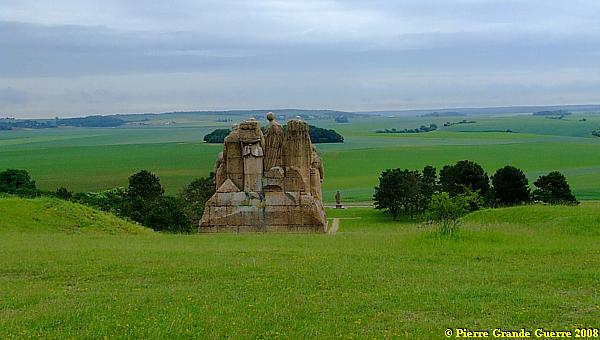
A visit to some interesting sites of the Second Battle of the Marne (from 18 July until 4 August 1918) :
Givry, Forêt de Retz, Landowski's Fantômes - Oulchy le Château, Oise-Aisne American Cemetery - Fère en Tardenois, and the Loupeigne French-German War Cemetery.
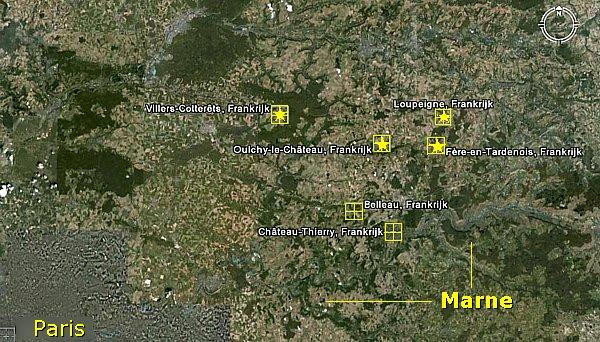
North of the village of Belleau lie some hills around the hamlet of Givry. During the first days of the Second Battle of the Marne, from 18 until 24 July, not only the American 26th Infantry Division, but also French troops had some fierce fights with the Germans on these hill slopes.
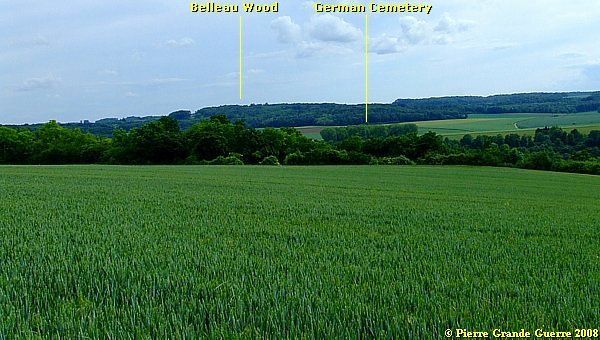
Panorama views from this memorial stèle near Givry along the former position of German trenches, which tells us now:
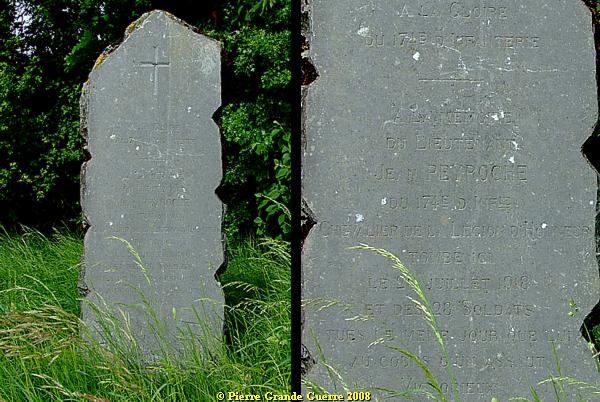
We leave the area of Belleau Woodand Givry to make a jump of 25 Km. north-westward to the Fôret de Retz near Villers Cotterêts. Before we arrive there, some reminders about
The
Second Battle of the Marne (18 July-4 August 1918)
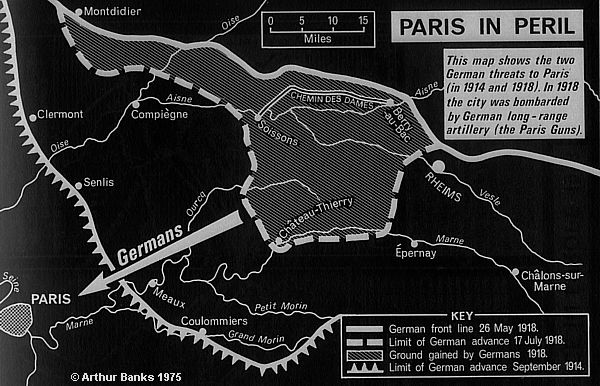
After succesfully blocking of the German offensive near Château Thierry and Belleau Wood on 26 June 1918 by the Allies ( watch and read " Belleau Wood " ), 23 German divisions of the 1st and 3rd Armies, led by General Mudra and General Von Einem, launched on 15 July Operation "Marneschutz". These divisions assaulted the French 4th Army under General Gouraud east of Reims.
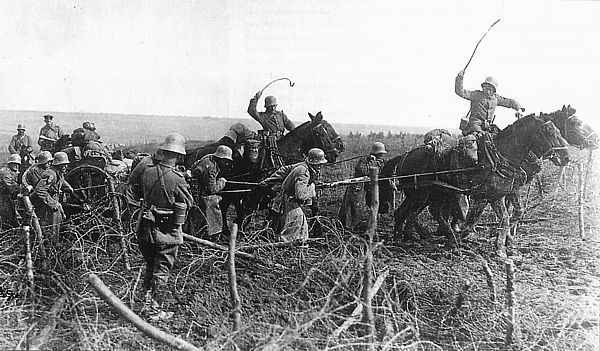
At the same time, 17
divisions of General Von Böhn's 7th Army, ...
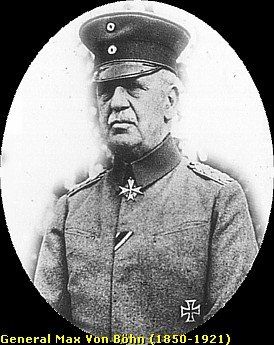
... aided by the 9th Army under General Von Eben, attacked the French 6th Army, commanded by General Degoutte to the west of Reims, in the Ourq valley. Ludendorff hoped to split the French forces in two.
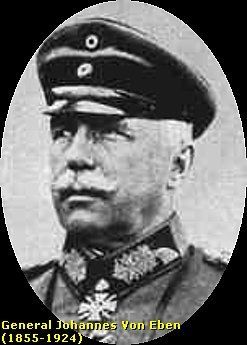
After a conference with the American General Pershing General Foch, the Allied Supreme Commander, decided, that it was time for a major counteroffensive.
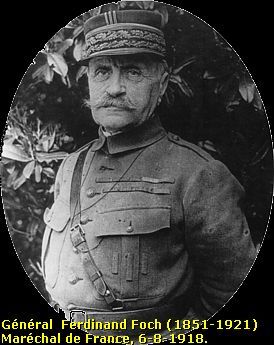
The Americans added 3 US divisions to the 10th Army of General Mangin, 2 divisions to Degoutte's 6th Army, and 3 divisions to Mitry's 9th Army. General Godley's British XXII Corps also joined the French for the battle. The Italian II Army Corps of General Albricci assisted Degoutte's 6th Army.
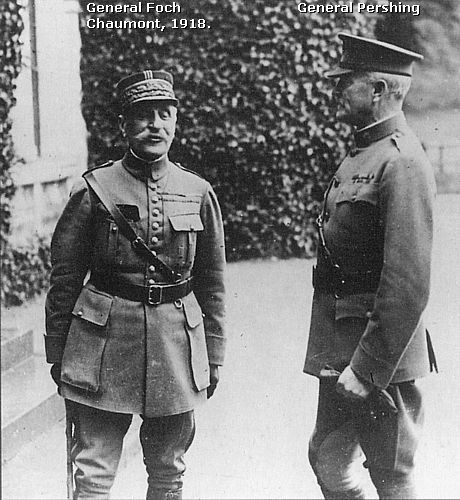
At dawn on 18 July 1918 the French Armies, joined by their Allies, attacked behind a rolling artillery barrage with 350 tanks the recently formed German Soisson-Reims Salient. The French were entirely successful, with Mangin's 10th Army and ...
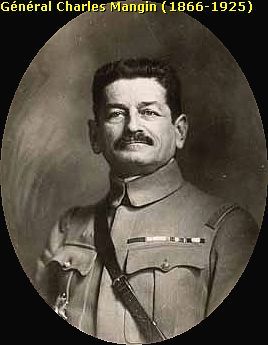
... Degoutte's 6th Army advancing 8 km. on the first day. General Berthelot's 5th Army and Von Eben's 9th Army launched additional attacks at each other in the east.
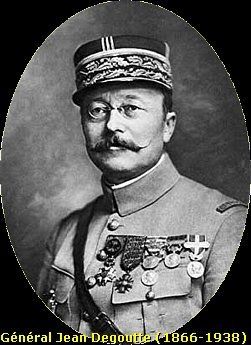
Between 21 and 27 july the Germans made a fighting retreat to the Ourq valley. From 29 July the Germans were forced all the way back to the positions, where they had originally started earlier that year their spring offensives of the "Kaiserschlacht". The Allied counter-attack petered out between 4 and 10 August, when well-entrenched German troops on the Hindenburgline, ground it to a halt.
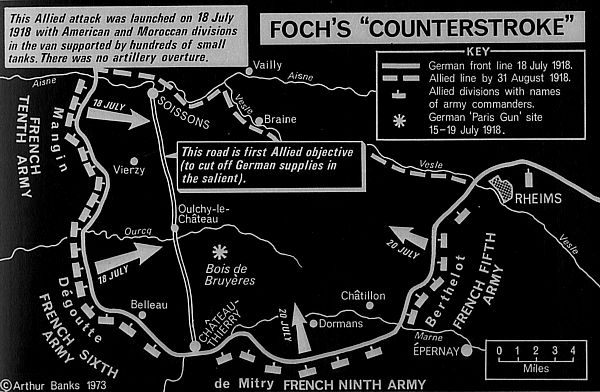
Casualties
After
the Battle the French had 95.165 casualties, the British had
16.552 men killed or wounded, the Americans 12.000 casualties, the
Italians 9.334.
The Germans lost 139.000 men, dead or wounded, 29.367 men captured, and 793 artillery guns lost.
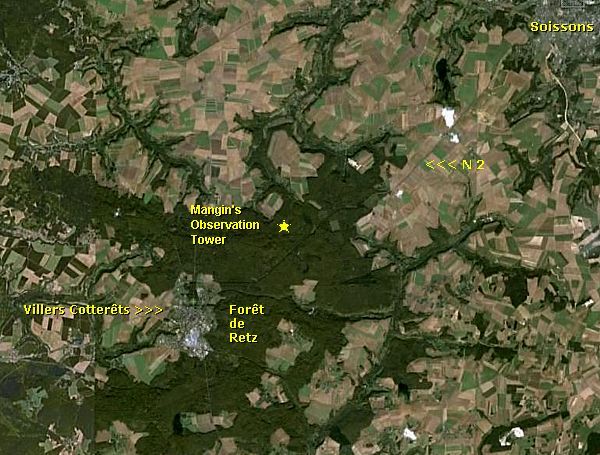
The Fôret de Retz near Villers- Cotterêts was an important battlefield of the First Battle of the Marne of 1914, but also in the summer of 1918.
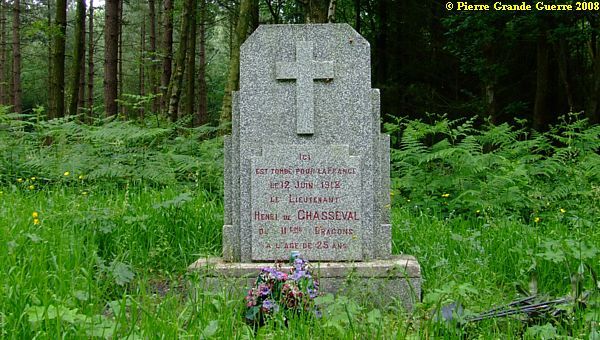
On 18 July 1918 the forest served as the Headquarters of General Mangin.
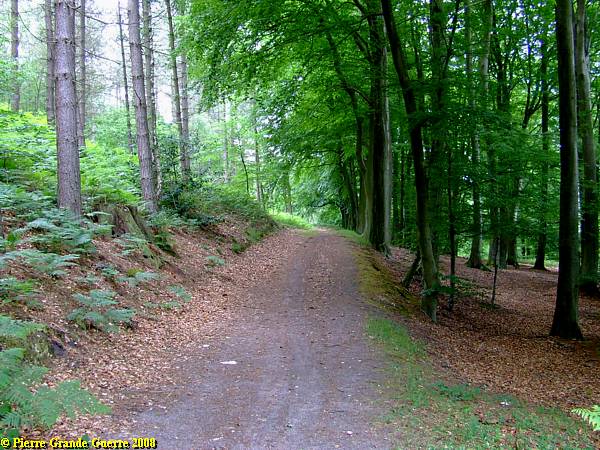
On this hill in the Forest of Retz, the Mont Mangin (231 m.), the French constructed an observation tower, from where General Mangin observed and commanded the attacks of his 10th Army on 18 july 1918.
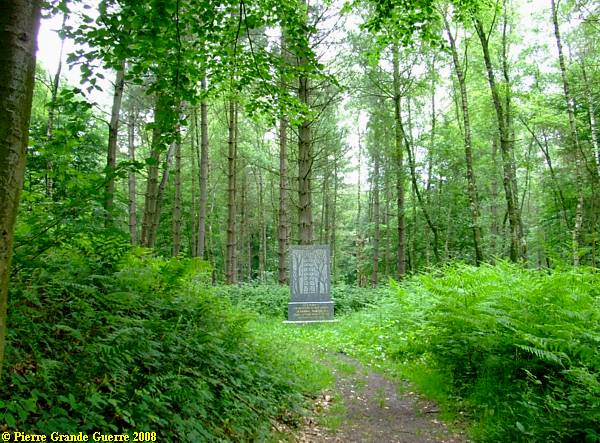
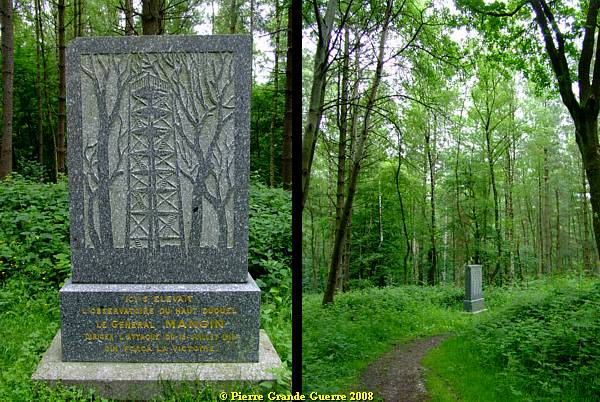
The 10th Army included also the U.S. 1st. and 2nd. Divisions, and the 1st Moroccan Division. On 21 July these Army units secured the important road from Soisssons to Château Thierry. From the Wood of Retz we make a jump of 20 km. eastward ...
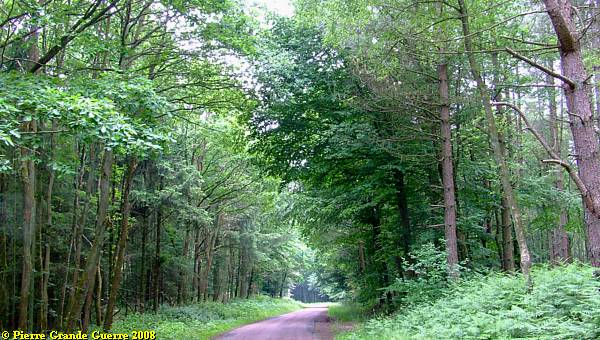
... to the Butte de Chalmont, east of Oulchy le Château.
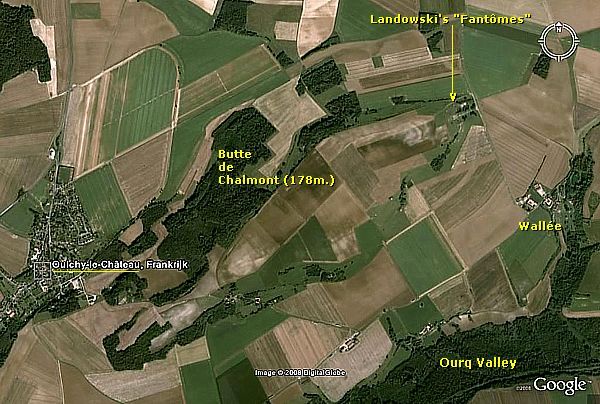
The country road, D 229, from Wallée northward, runs over the former battlefield of the valley of the river Ourq, along Landowski's "Fantômes" on the Butte de Chalmont.
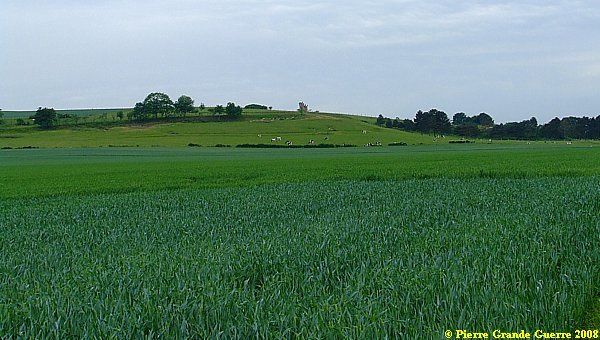
Landowski's Fantômes
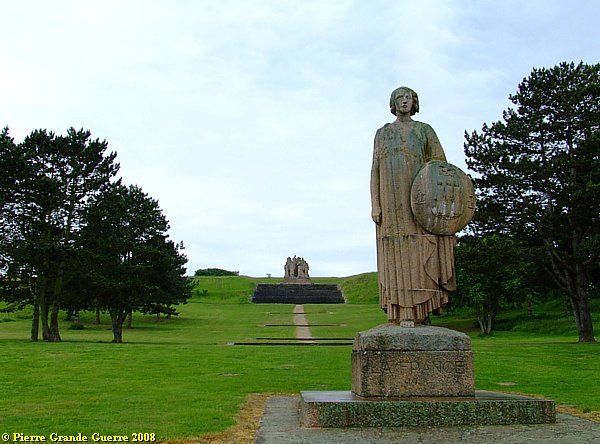
At the foot of the Butte is a 5 meters high, allegorical statue, representing "France 1918". Between the image of "France 1918" and the "Fantômes" - sculptures are 4 "steps", each symbolizing a year of the war.
The 8-metre-high statuegroup "Les Fantômes" on top of the Butte is sculptured by Paul-Maximilien Landowski (1885-1961), a Great War veteran, who served in the French 35th Infantry Regiment.
On each side of "France 1918" are two memorial walls with French inscriptions. The left wall tells about the complete order of battle, of the generals, and the units, which were involved in the Second Battle of the Marne during the period 15 July until 4 August.
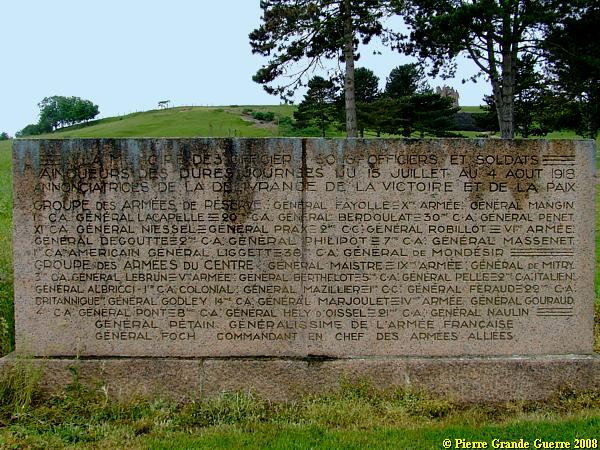
The right memorial wall offers a concise history about the special significance of the battle and the conquest of the Butte Chalmont on 25 and 26 July 1918 for the Second Battle of the Marne :
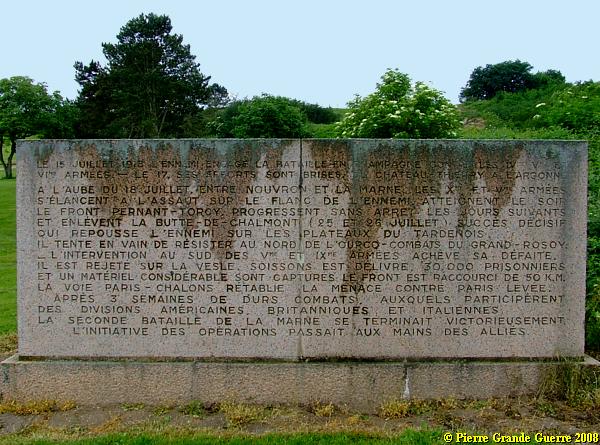
"ON 15 JULY 1918 THE ENEMY LAUNCHED AN OFFENSIVE AT THE CHAMPAGNE AGAINST THE IVth, Vth, AND VIIth ARMIES. ON THE 17th HIS EFFORTS WERE BROKEN AT CHATEAU THIERRY AND IN THE ARGONNE. AT DAWN OF THE 18TH JULY, BETWEEN NOUVRON AND THE MARNE, THE Xth AND THE Vth ARMIES LAUNCHED AN ATTACK ON THE FLANK OF THE ENEMY, AND REACHED IN THE EVENING THE FRONT PERNANT-TORCY. WITHOUT STOPPING THEY MOVED ON THE NEXY DAYS, AND CONCQUERED THE BUTTE DE CHALMONT (25 AND 26 JULY), THE DECISIVE SUCCES, WHICH PUSHED BACK THE ENEMY ON THE HIGH GROUNDS OF THE TARDENOIS. IN VAIN HE TRIED TO RESIST NORTH OF THE OURQ,- BATTLES NEAR GRAND ROZOY - THE INTERVENTION IN THE SOUTH BY THE VIIth AND IXth ARMIES - BUT IN TOTAL DEFEAT.
HE WAS FORCED BACK ON THE VESLE. SOISSONS WAS LIBERATED. 30.000 PRISONERS AND A CONSIDERABLE AMOUNT OF MATERIAL WERE CAPTURED. THE FRONT HAS BEEN SHORTENED WITH 50 KM - THE ROAD PARIS-CHALONS SECURED. THE THREAT AGAINST PARIS RELIEVED AFTER TRHREE WEEKS OF HARD COMBATS, IN WHICH PARTICIPATED AMERICAN, BRITISH, AND ITALIAN DIVISIONS. THE SECOND BATTLE OF THE MARNE ENDED VICTORIOUSLY.THE INITIATIVE OF THE OFFENSIVE PASSED IN THE HANDS OF THE ALLIES."
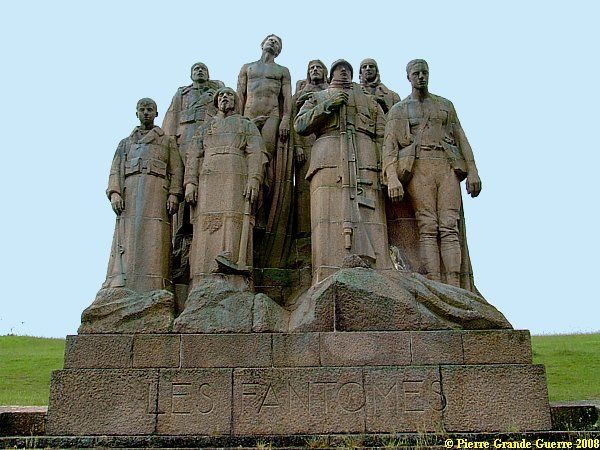
The Phantoms represent a group of eight soldiers-ghosts. Seven Phantoms, who have closed their eyes: a young, beardless recruit, a sapper, a machinegunner, a grenadier, a colonial soldier, an infantrist, and an aviator.
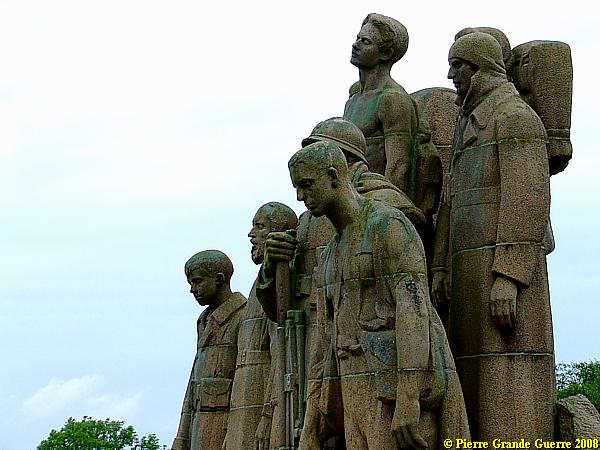
Though their eyes are closed, the Phantoms seem to look out for other killed comrades. These seven Phantoms accompany and protect the just fallen, young soldier in the middle, who wrestles himself out of his shroud.
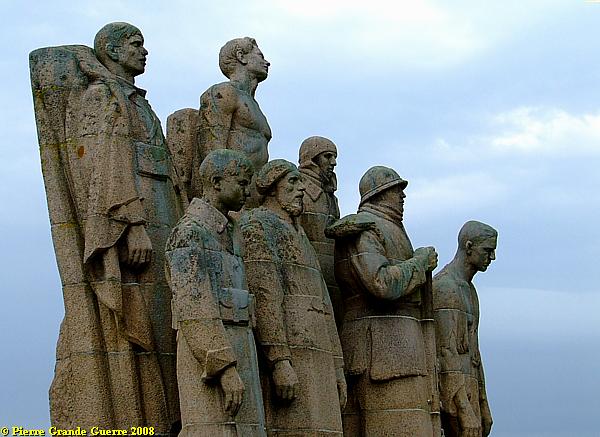
From behind the "Fantômes" a panorama view northeast.

View northward to Grand Rozoy and Beugneux.
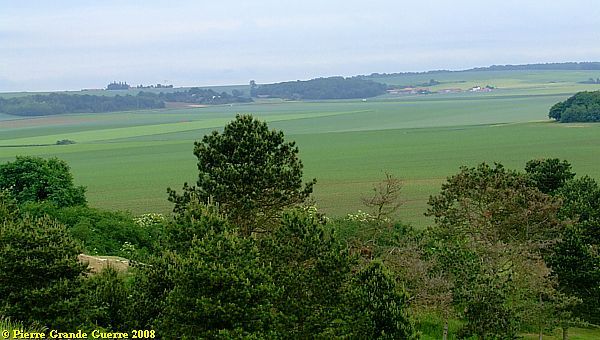
View northeastward to Loupeigne and the direction of the Vesle River.
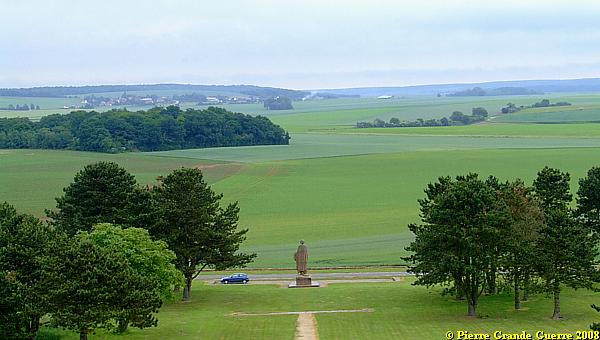
From these fields the Germans retreated more northward, to Hill 148 and Hill 212 near Fère en Tardenois. View eastward to Fère en Tardenois.

We leave Landowski's Fantômes ...

... and again we make a jump eastward of only 10 km. to Fère en Tardenois and Seringes et Nesles along the Ourq river.

The US 28th Division on 27 July 1918
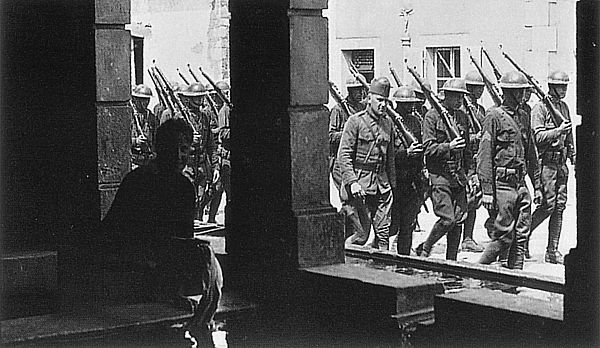
On 27 July the US. 28th Division cleared these heights, east of the Soissons - Château Thierry Road, and north of Oulchy. At dawn of 28 July, 3 American Divisions (3rd, 28th, and 42nd) attacked the German positions on Hill 184 near Seringes et Nesles and Hill 212 nearby Sergy. At the end of the day the Americans conquered both hills and the villages around it .
View at Seringes et Nesles.
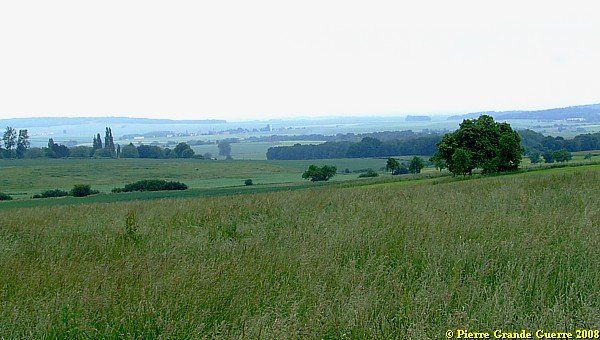
At the foot of Hill 184, at Seringes et Nesles, lies the Oise-Aisne American Cemetery .


The Oise-Aisne American Cemetery contains 4 plots, A, B, C, and D, with the graves of 6.012 American soldiers. The cemetery has been designed by the French Paul Cret, a veteran of the Chasseurs Alpins, who designed amongst others also the Château Thierry Memorial. All soldiers, buried here, were killed in 1918 in this area.

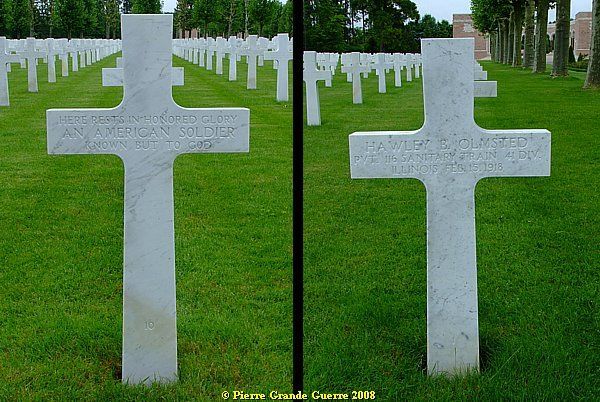

The sandstone Memorial at the end of the cemetery has the shape of a curving collonade.
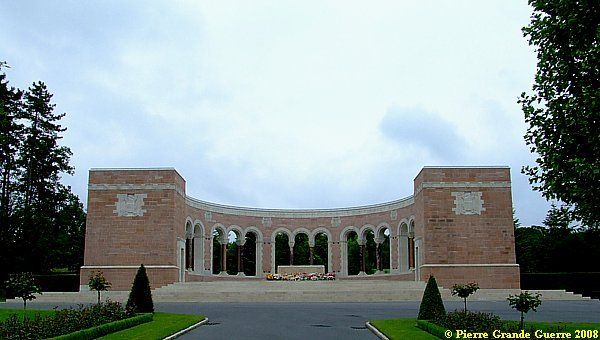
In the front of it is a stone sarcophagus.

The wreaths has been laid a few days before, during the yearly Memorial Ceremony on 25 May.
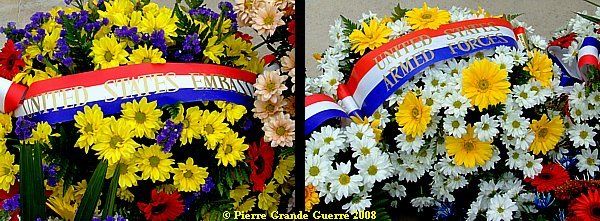
In the collonade wall: bas reliëfs of "Dough Boys".
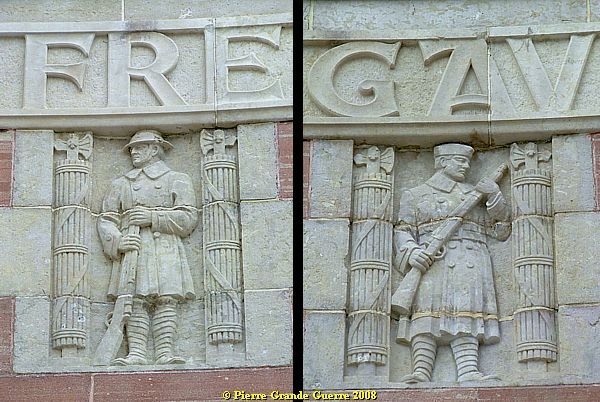
Every pillar wears an emblem of an American division.
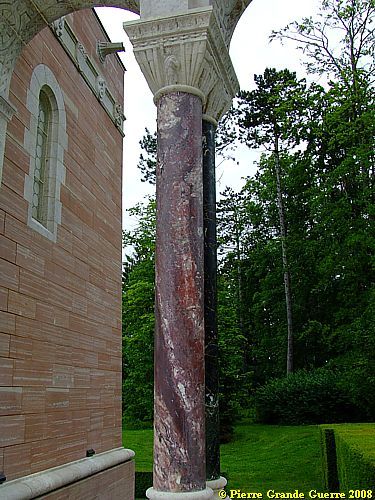
On the capitals of the pillars: emblems of American Divisions.
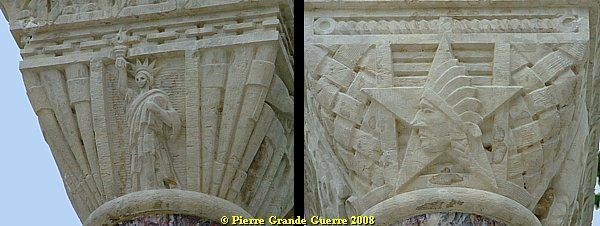
In the left side of the memorial wall is a small chapel, ...
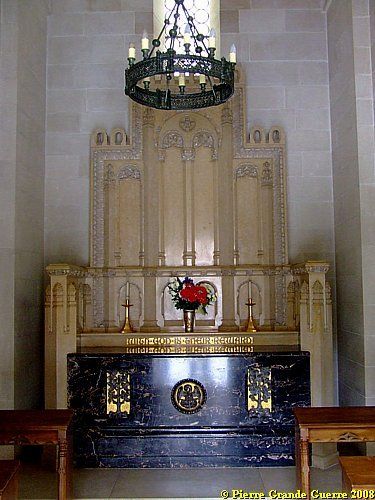
... of which the walls are inscripted with names of missing soldiers.

Outside on the cemetery, there are also some graves of women to be found, like this grave of a nurse, Katheryne E. Greene, ...

... or this grave of a YMCA secretary, Lorraine Ransom, who died 4 months after the war.

We leave the cemetery.
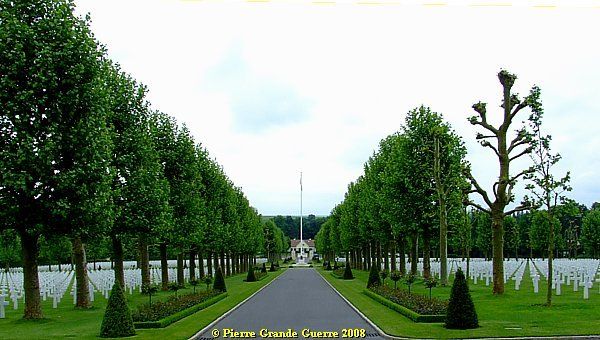
From Seringes et Nesles we make a jump of 5 km. northward to Loupeigne.
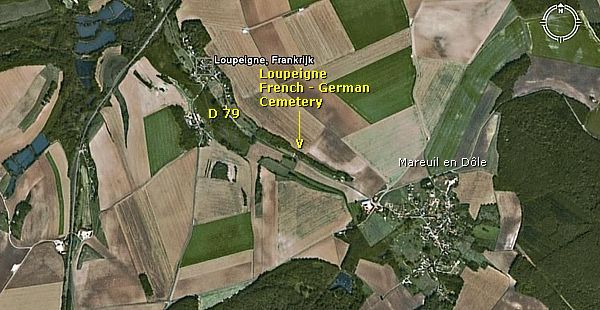
Loupeigne Franco-German Cemetery
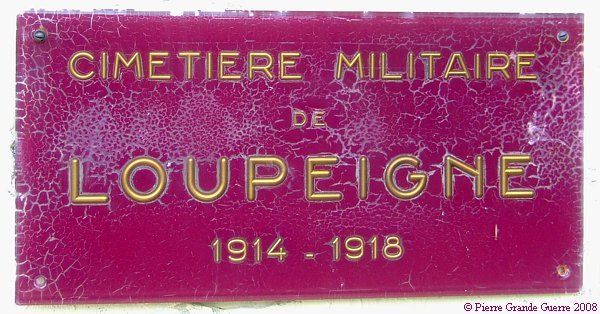
At the entrance of the cemetery in the middle is a small chapel and a French ossuary. The cemetery has two wings, a German plot and a French plot.
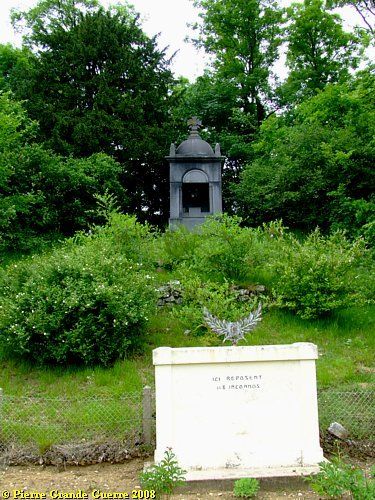
The right wing of the cemetery forms the German war cemetery.
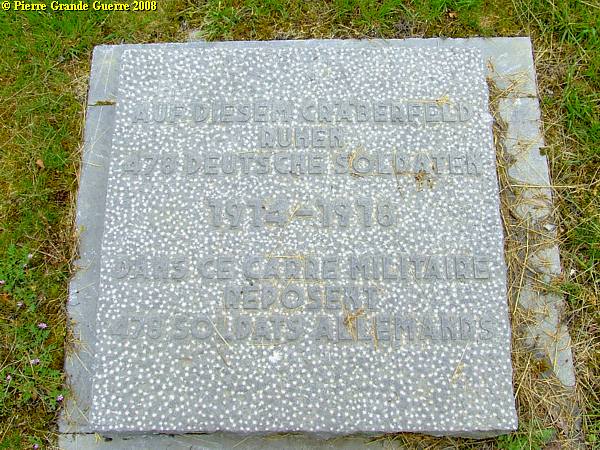
It contains the graves of German soldiers, fallen in this area during the summer of 1918.
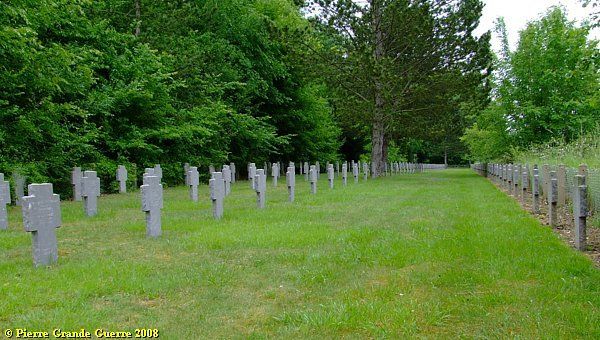
Relatively seen there are many graves of officers.
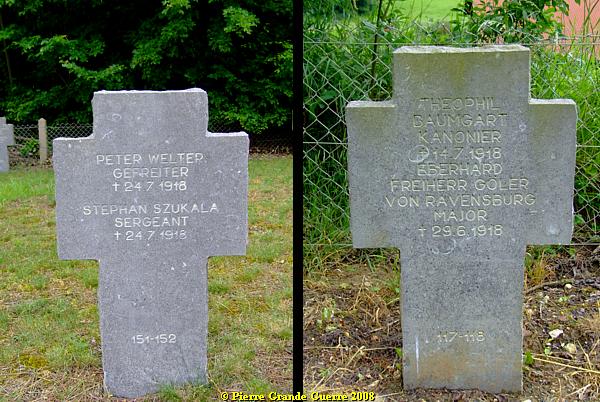
View over the German wing in the direction of the French Cemetery.
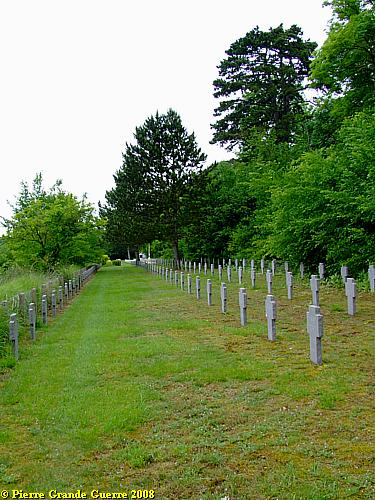
At the centre of the cemetery stands a small chapel.
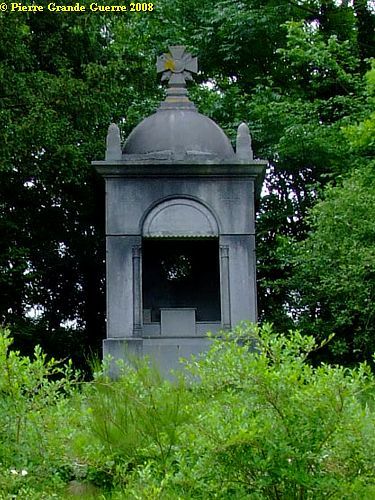
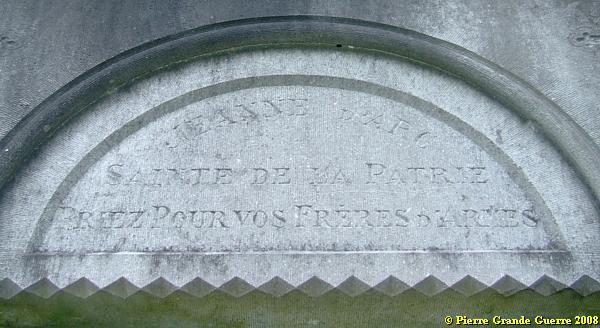
The chapel is dedicated to the French officers of Artillery and Infantry, who fell in 1917-1918.
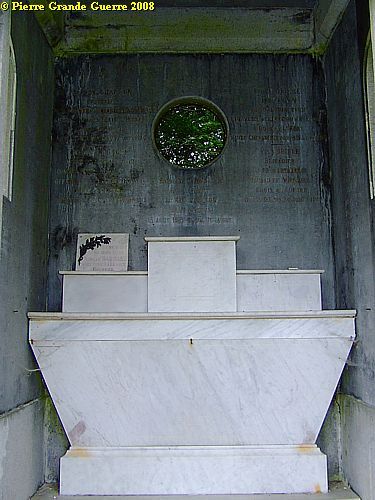
Below the chapel is a sober ossuary for 118 unknown French soldiers.

The left wing of the cemetery forms the French cemetery.
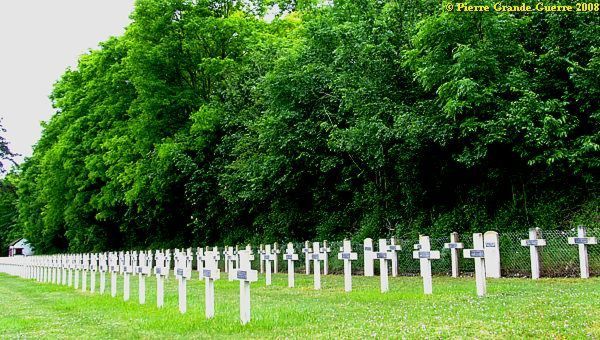
The French cemetery contains 480 graves.
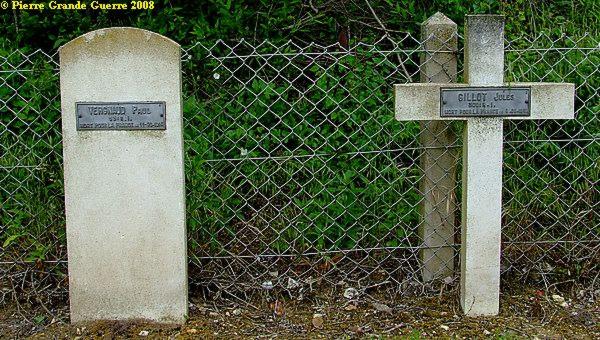
Also in this wing: graves of French soldiers, killed in this area during the summer of 1918.
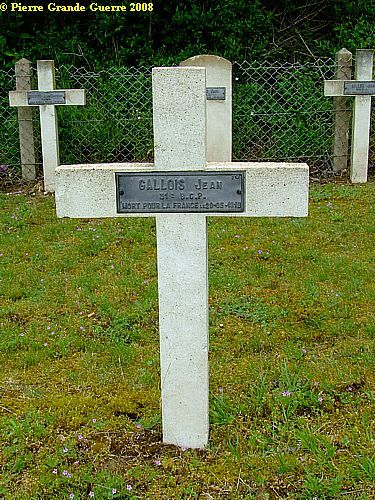
With a last view over the Loupeigne war cemetery, we finish this photo impression of some locations of the Second Battle of the Marne.
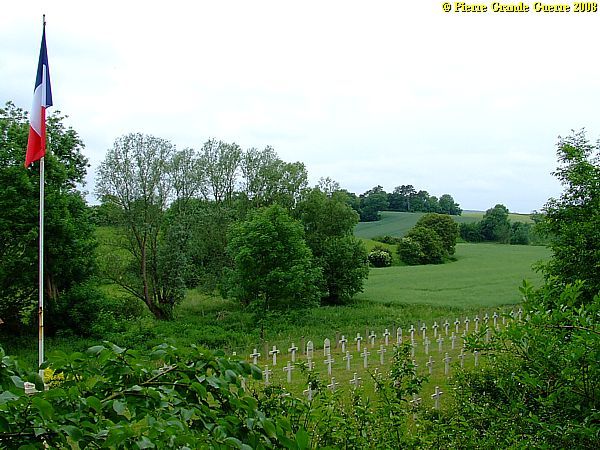
Continue to: " St. MIHIEL SALIENT - Les Eparges Ridge "










